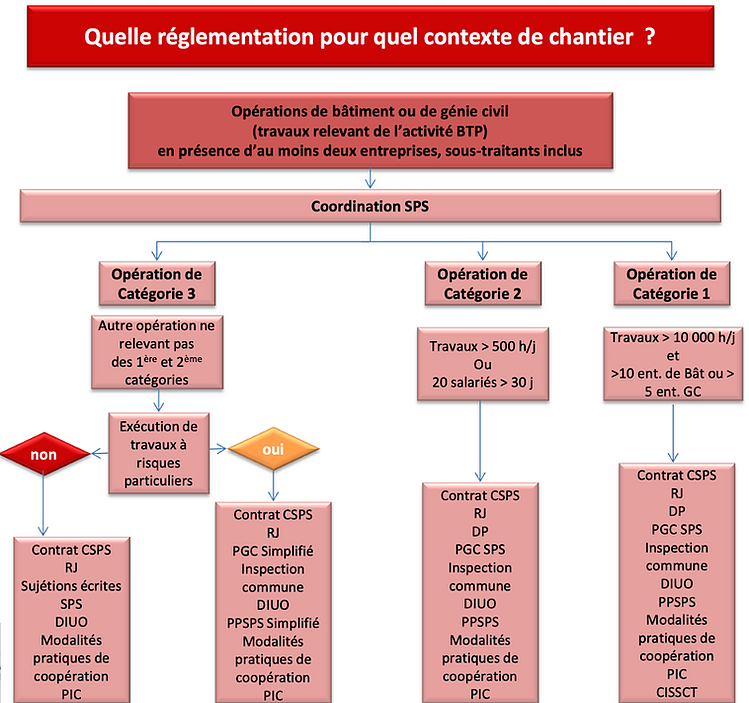Mission of CSPS Level 1, 2 and 3 (Design and Implementation)
SECURE YOUR SITES - PREVENT HAZARDS
Construction and public works sites involve many participants simultaneously or successively. This exposes workers to risks related to the coactivity of companies and the overlapping of tasks.
Health and safety coordination (CSPS) on construction sites is required of project owners from the design phase and during the execution of the work. It results from the obligations of the labour code, aiming at reducing the risks related to the coactivity on site and the subsequent interventions.

ROLE OF A HEALTH AND SAFETY COORDINATOR (HSC)
The role of the HS coordinator is to coordinate, plan and analyse simultaneous or successive operations in order to prevent risks linked to co-activity and thus ensure the safety and protect the health of people working on a building or civil engineering site. In consultation with the project manager, he establishes the general safety measures and is then in charge of monitoring the implementation and the compliance of the various participants with the measures taken.
SCOPE OF APPLICATION
Safety coordination is organized according to different categories of operations (article R. 4532-1). The regulations define 3 categories, according to the level of coordination required:
- Category 1: operations of more than 10,000 men x day (i.e. more than 80,000 hours or approximately €4 million) with at least 10 companies for building operations or 5 for civil engineering operations
- Category 2: operations of more than 500 men x day (i.e. 4,000 hours or approximately 300,000 €) or 30-day site with a peak workforce of more than 20 employees and not in category 1
- Category 3: Other operations

These categories have different provisions regarding the tools to be used:
- General Safety and Health Protection Coordination Plan (PGCSPS),
- Specific health and safety plan (PPSPS).
.
METHODOLOGY OF THE MISSION
DESIGN PHASE :
During this phase, the coordinator is involved in the operation and assists the project owner in drawing up the written project documents and the tender documents. The coordinator’s mission is to examine the proposed solutions for the safety of the site.
- Analysis of the general organization of the site and definition of the measures to be taken to reduce the risks related to the site environment.
- Construction risk analysis to reduce the hazards of co-activity: CMP
- Definition with the client / project manager of the measures to be taken to ensure that subsequent interventions are carried out in satisfactory safety conditions: DIUO
Implmentation phase
During the execution phase, the coordinator controls the application of the prevention measures foreseen in the general coordination plan through :
- The follow-up of the implementation of the different provisions recorded in the PGC during the design phase
- Drawing up a logbook to record the various actions or information specific to the SPS coordination process
- Updating of the PGC and DIUO according to the reality and the evolution of the building site
- Good communication with the project manager or owner and the various companies involved.
To make our support more fluid and efficient, we use the GCSPS software


During the acceptance phase, the SPS Coordinator gives the project owner the complete DIUO containing all the elements necessary to ensure the future maintenance of the site in complete safety (compulsory document that the project owner must draw up).
